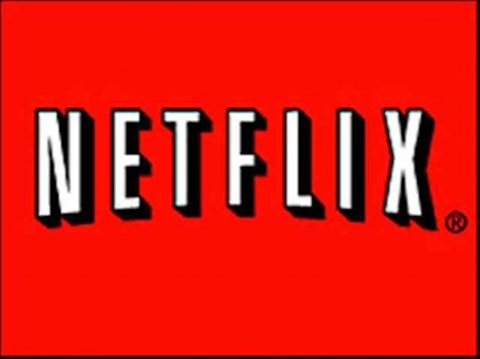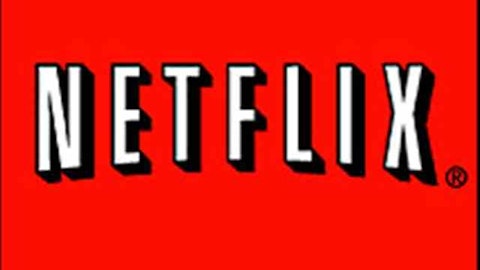Investors tend to have polarizing opinions on Netflix, Inc. (NASDAQ:NFLX) as an investment.
After seeing the shares more than triple over the past six months, it’s only natural. Bulls feel that the model’s been validated. Bears that were skeptical about the business are now even more cynical when it comes to valuation.
It’s not just retail investors like you and me that find ourselves perched at one extreme or the other. Analysts are also either red-hot or ice-cold on the leading video service.
RBC Capital Markets analyst Mark Mahaney reinitiated coverage of Netflix this week. He may appear to be late to the rally, but he’s hopping on with a buy rating and a $210 price target. The move sharply contrasts the opinion of Wedbush Securities analyst Michael Pachter.
Pachter was on CNBC’s Fast Money yesterday, discussing his sell rating and $55 price target.

“It’s deja vu all over again,” Pachter began, getting all Yogi Berra in reflecting on Netflix’s short-lived but torrid rally that took the shares above $300 two summers ago before cashing down.
Pachter argues that Netflix Inc. (NASDAQ:NFLX) is in worse shape now than it was a couple of years ago after destroying its high-margin DVD rental business and “chasing windmills overseas” in what has proven to be a costly and profitless international expansion.
Even bulls concede that CEO Reed Hastings’ global push isn’t going to bear fruit right away. Mahaney sees losses continuing internationally at Netflix Inc. (NASDAQ:NFLX) for another two years.
However, the real draw for Mahaney and other bulls is that domestic growth for the sticky and affordable streaming service is growing. He sees Netflix tacking on 5 million net stateside subscribers a year in the near future, targeting 39 million domestic accounts by 2015.
Time machine
Since Pachter argues that Netflix is “a worse company today than it was a couple of years ago,” let’s go back in time.
Netflix Inc. (NASDAQ:NFLX) closed out 2012 with roughly 35 million subscribers, and 33 million of those are streaming accounts. There are 8.2 million DVD renters, and most of those overlap as streaming subscribers.
Netflix Inc. (NASDAQ:NFLX) closed out 2012 with $3.6 billion in revenue, and a modest profit.
What did Pachter mean by a couple? Is he referring to 2009 when Netflix watched over 12.3 million subs and generated $1.7 billion in revenue? Is he thinking about 2010 when Netflix crossed 20 million members in generating $2.2 billion in revenue?
Yes, Netflix was far more profitable then. Netflix Inc. (NASDAQ:NFLX) generated $115.9 million in net income in 2009 and $160.9 million in 2010. Netflix rang up just $17.2 million in 2012 profits after peaking in 2011 at $226.1 million.
“Yes,” bears shriek,”that’s the problem!”
However, keep in mind that Netflix’s profit happened despite a $389 million contribution loss in the company’s international streaming business. Back out Netflix’s entire international operations, and it is most certainly a better financial performer than it was even when its stock peaked two summers ago.
Pressing on
Netflix is also in a more confident place right now. Sure, the margins were great at its peak in DVD rentals, but the market was always discounting Netflix on the optical disc’s eventual obsolescence. Netflix didn’t wait to get disrupted. It didn’t wait until Blockbuster started closing stores to realize that it could die as a DVD leader. It took the lead in the technology that would ultimately disrupt the optical disc’s popularity.
If Netflix didn’t go this route — more than doubling its revenue in three years, I might add — someone else would’ve done it and Netflix would be on the wrong side of growth and media consumption.
Amazon.com, Inc. (NASDAQ:AMZN) rolled out the Kindle just as Netflix started streaming and it went on to corner the e-reader market that would disrupt its original physical books business. Margins also have taken a hit as it battles for market share.
This is the same story at Netflix Inc. (NASDAQ:NFLX), and now that Amazon is bending over backwards to matter in digital video streaming, it’s too late. Netflix has more than 33 million streaming subscribers worldwide, and it can therefore afford to spend more on digital content than anybody else.
You have to pity Coinstar, Inc. (NASDAQ:CSTR) that waited until now — and really not even “now” since Redbox Instant is still in private beta — to learn what Netflix did six years ago.
Bears will be bears
Pachter argues that all that Netflix did was surprise investors with a small profit during the holiday quarter after keeping costs in check.
“I don’t get how investors think that one-time tweaking of their spending is worth $5 billion,” he says. “Nothing changed.”
It’s not that.
The shares were already rallying for months before January’s quarterly report, and it wasn’t just about the bottom line. Subscriber growth was off the charts. Netflix’s outlook was upbeat, and this current quarter should mark the first time that Netflix’s domestic streaming business tops DVDs in contribution profit.
Netflix Inc. (NASDAQ:NFLX) isn’t perfect, and bulls need to know that. However, Netflix also isn’t broken, and that’s something that bears seem to miss.
The article You Either Love Netflix or You Hate It originally appeared on Fool.com and is written by Rick Aristotle Munarriz.
Longtime Fool contributor Rick Aristotle Munarriz owns shares of Netflix. The Motley Fool recommends Amazon.com and Netflix. The Motley Fool owns shares of Amazon.com and Netflix.
Copyright © 1995 – 2013 The Motley Fool, LLC. All rights reserved. The Motley Fool has a disclosure policy.





